
I will be the first to admit that first impressions are usually wrong. Such is the case with the small, delicate constructions John Byam makes of wood, sawdust, and glue; works I breezed past last January at the Outsider Art Fair in New York. They would be easy to overlook, even to a person alert to self-taught. Was it their diminutive size and fragile, rough-hewn look? As I look back, these small works were simply overshadowed by the enormity of the fair itself. On second look, I realize that I completely missed “seeing” what Byam's gallerists and some informed collectors already see: fresh, original work that goes far beyond first impressions.
Byam was born in Oneonta, New York, in 1929 and spent a large part of his life assisting his parents in the daily operations of the family-owned trailer court. In the late 1940s Byam went to work for the Delaware and Hudson Railway, then served two years with the US military stationed in Japan during the Korean War. In 1952 he returned home to his parents and took several jobs, including one as a part-time gravedigger for a local cemetery. He died in 2013.
No topic was too mundane to spur Byam. It’s as if a noun popped in his head and he set about to make it. Staircase. Airplane. Gun. Bicycle. Chair. Rocket. Byam apparently made hundreds of constructions, all with only a pocketknife, glue, wood, and sawdust. I see hands working constantly, like one of these videos you see of a kid solving a Rubik’s cube. And, he didn’t need much—just a box of throwaway wood scraps and glue.
If you look at his work as a group, Byam’s work can change your idea of art. He was happy creating the essence of a staircase, the gist of a table, or the soul of something. He built what he imagined—completely unencumbered and free from rules of what is supposed to look good. What a pleasure it is to see something so raw and fragile—almost ephemeral—like personal thoughts made visible. Byam’s artworks are simply gestures in sculpture—something rare to see nowadays.

Untitled (Kneeling Man)
8 x 8 x 2.5 in.
8 x 8 x 2.5 in.
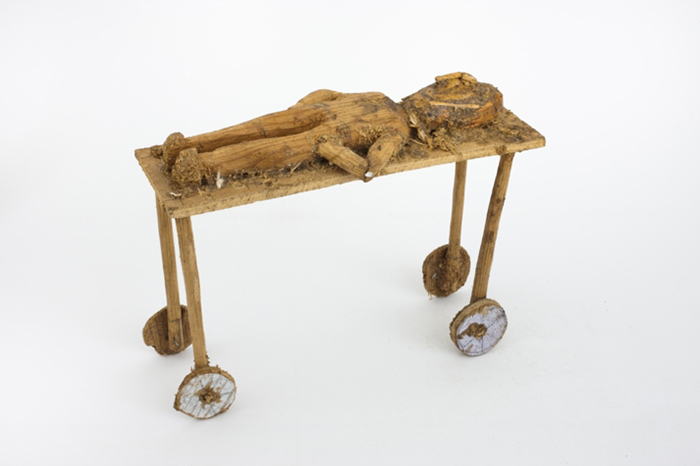
Untitled (Man in Bed on Wheels)
6.75 x 7.5 x 2.5 in.
6.75 x 7.5 x 2.5 in.
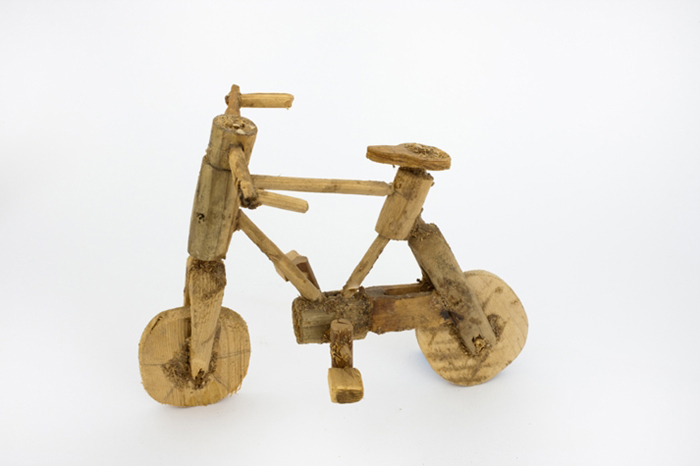
Untitled (Bicycle)
7 x 8.75 x 4 in.
7 x 8.75 x 4 in.

Untitled (Helicopter)
8.25 x 17.75 x 12.75 in.
8.25 x 17.75 x 12.75 in.
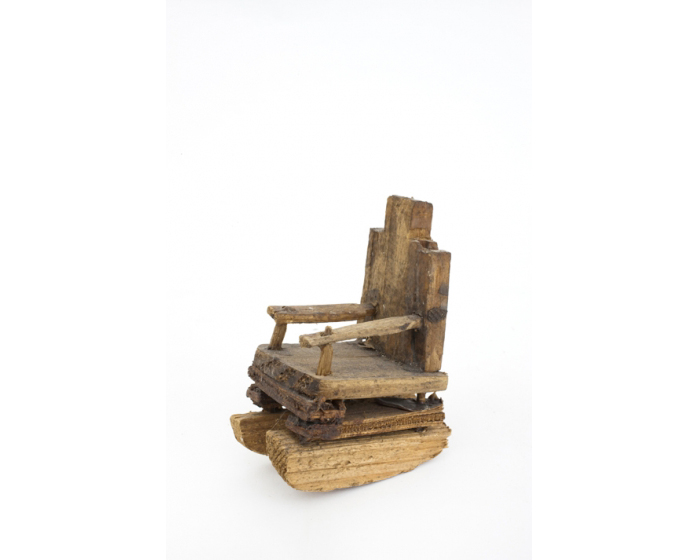
Untitled (Small Rocking Chair)
4 x 2.25 x 2 in.
4 x 2.25 x 2 in.

Railroad Bridge (1906–08)
2.25 x 5.5 x 2 in.
2.25 x 5.5 x 2 in.

Untitled (Airplane)
2 x 4.25 x 4.25 in.
2 x 4.25 x 4.25 in.

Untitled Gun (Silence)
6 x 3 x .5 in.
6 x 3 x .5 in.
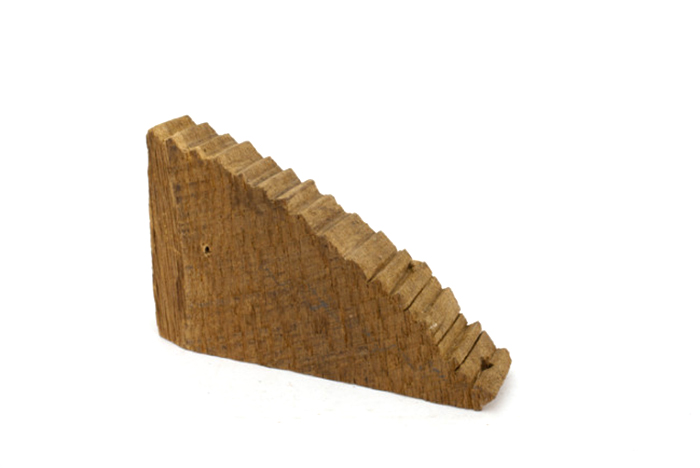
Untitled (Staircase)
3.5 x 5.5 x 1.5 in.
3.5 x 5.5 x 1.5 in.
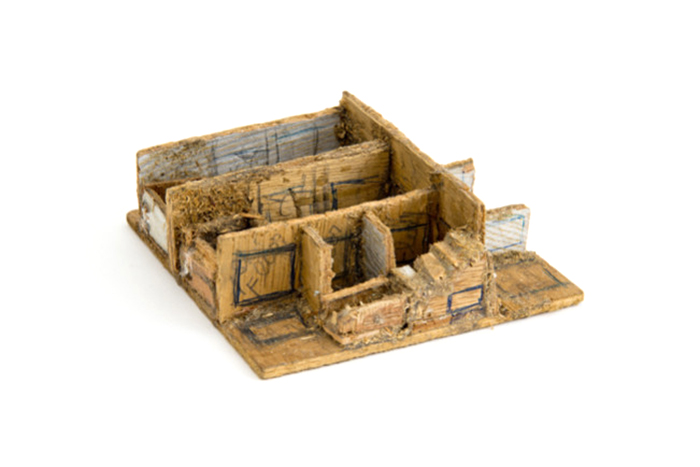
Untitled (Floorplan)
2 x 5 x 5 in.
2 x 5 x 5 in.

Untitled (Airplane Joe)
2 x 6 x 5 in.
2 x 6 x 5 in.
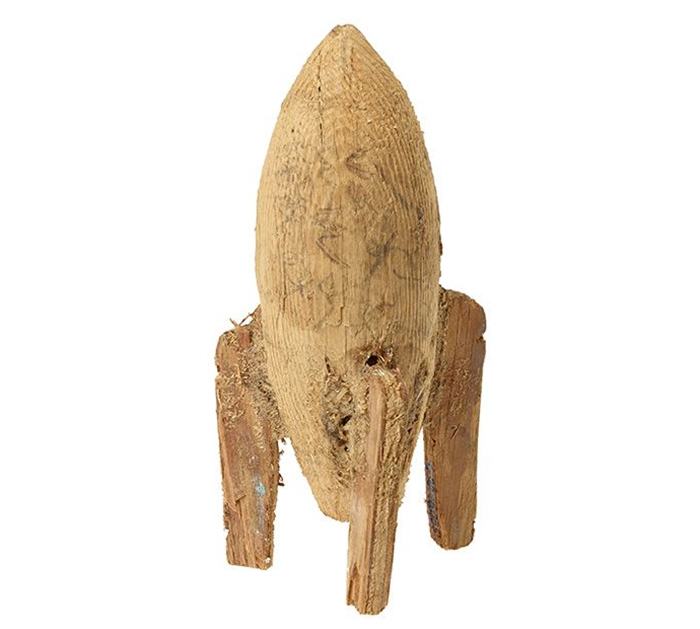
Untitled (Rocket)

Untitled (Tricycle)
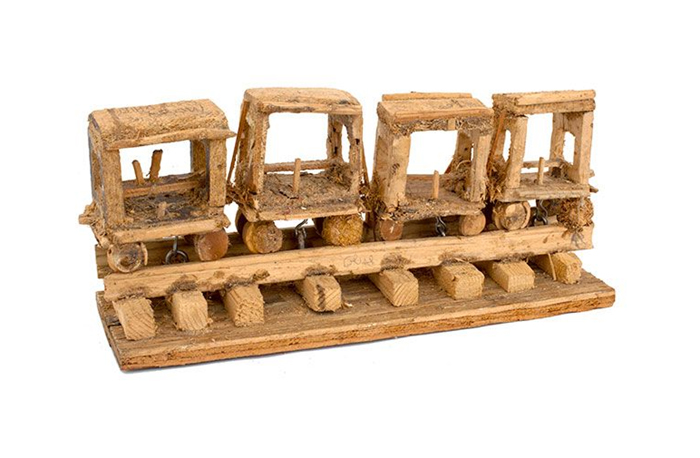
Untitled (Train)
All photos courtesy Andrew Edlin Gallery, NY, Good Luck Gallery, LA, and Collection de l’Art Brut, Lausanne
All photos courtesy Andrew Edlin Gallery, NY, Good Luck Gallery, LA, and Collection de l’Art Brut, Lausanne


Comments [2]
05.07.16
07:42
05.08.16
12:06